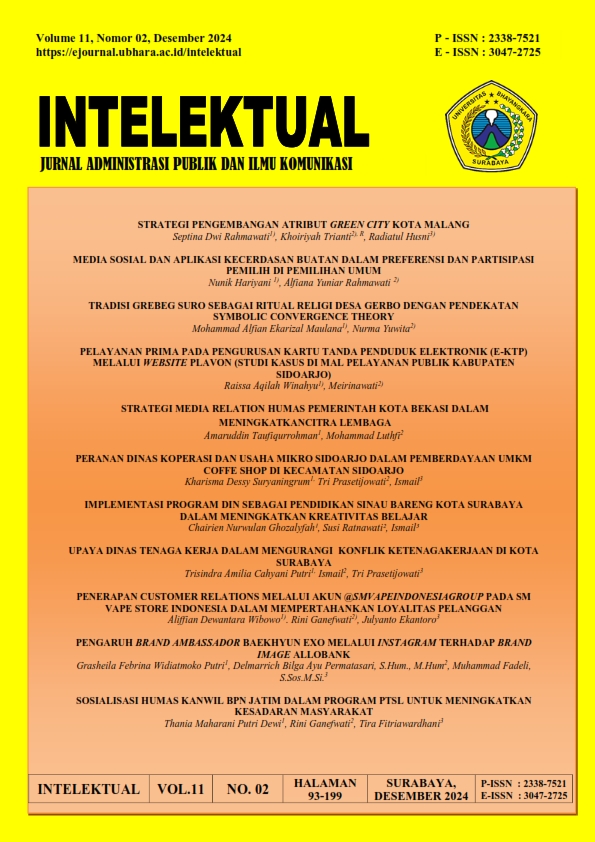Implementasi Program Dinas Sebagai Pendidikan Sinau Bareng Kota Surabaya Dalam Meningkatkan Kreativitas Belajar
Main Article Content
Abstract
This study aims to evaluate the implementation of the Sinau Bareng program by the Surabaya City Education Office in improving learning creativity in the community. The research method used is qualitative with a descriptive approach, through in-depth interviews and direct observation of program participants, including students, teachers, and parents. The results of the study indicate that the Sinau Bareng program has succeeded in creating a conducive and interactive learning environment, which encourages student creativity in the learning process. This program not only helps students catch up on their academic achievements after the COVID-19 pandemic, but also provides space for students from underprivileged families to get additional tutoring. In addition, this program is effective in reactivating the function of the RW hall as a center for educational and social activities, as well as reducing students' dependence on the use of gadgets by providing alternative interesting and creative learning activities. In conclusion, the Sinau Bareng program is an effective strategy in improving learning creativity in the Surabaya community and can be used as a model for similar programs in other areas
Article Details

This work is licensed under a Creative Commons Attribution-NonCommercial 4.0 International License.
Authors who publish with Intelektual: Jurnal Administrasi Publik dan Ilmu Komunikasi agree to the following terms:
- The author retains copyright licensed under Creative Commons Attribution-NonCommercial 4.0 (CC BY-NC 4.0), which allows others to remix, adapt, and expand on the author's work non-commercially, and even if someone else's new work must also acknowledge the author and is non-commercial, they do not need to license their derivative works on the same terms.
- Authors are permitted and encouraged to post their work online (e.g., in institutional repositories or on their websites) before and during the submission process, as this can lead to productive exchange, as well as earlier and greater citation of the published work ( See Impact of Open Access). Authors can archive preprints and postprints or publisher/PDF versions.

